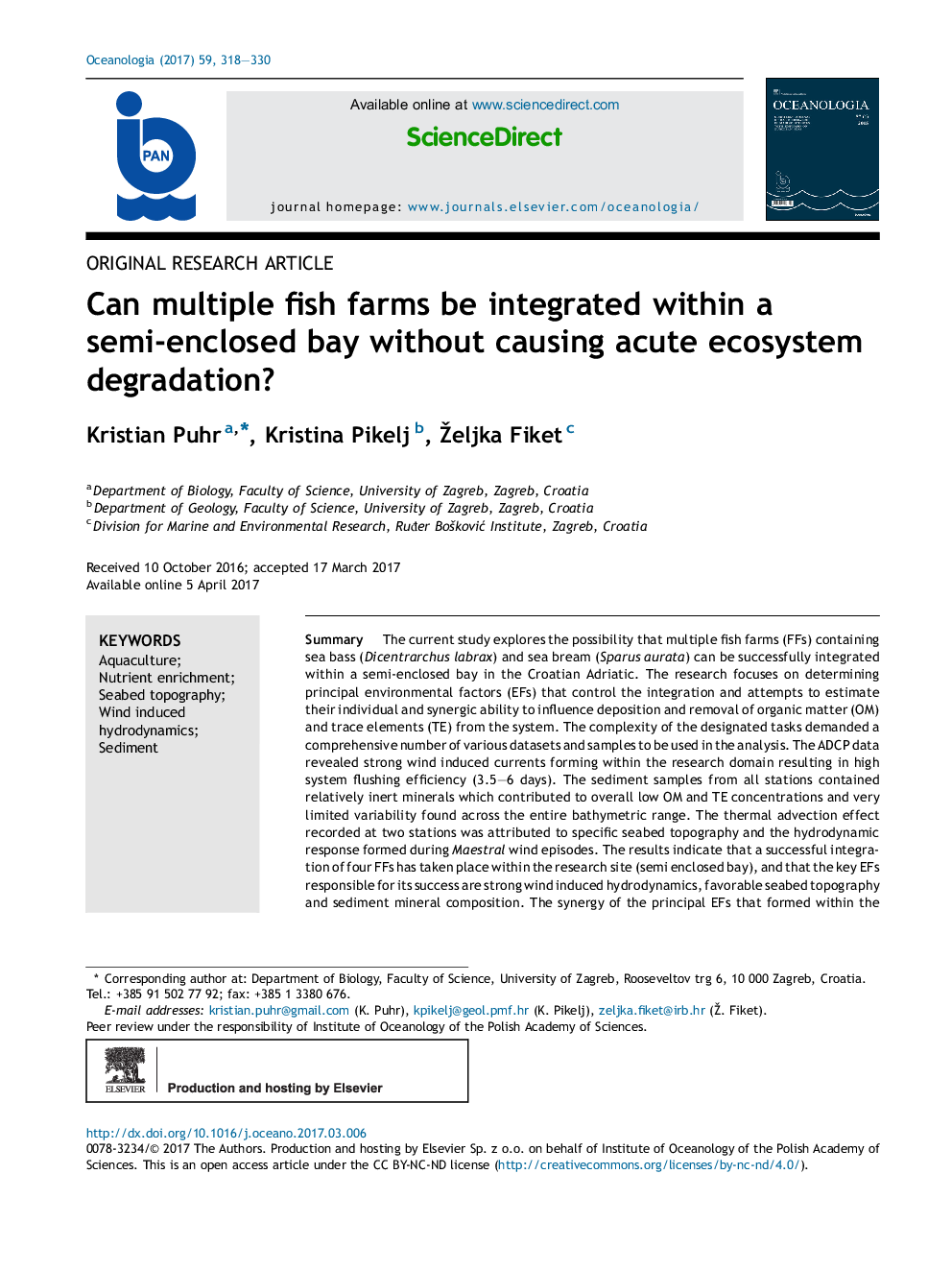| Article ID | Journal | Published Year | Pages | File Type |
|---|---|---|---|---|
| 5519779 | Oceanologia | 2017 | 13 Pages |
SummaryThe current study explores the possibility that multiple fish farms (FFs) containing sea bass (Dicentrarchus labrax) and sea bream (Sparus aurata) can be successfully integrated within a semi-enclosed bay in the Croatian Adriatic. The research focuses on determining principal environmental factors (EFs) that control the integration and attempts to estimate their individual and synergic ability to influence deposition and removal of organic matter (OM) and trace elements (TE) from the system. The complexity of the designated tasks demanded a comprehensive number of various datasets and samples to be used in the analysis. The ADCP data revealed strong wind induced currents forming within the research domain resulting in high system flushing efficiency (3.5-6 days). The sediment samples from all stations contained relatively inert minerals which contributed to overall low OM and TE concentrations and very limited variability found across the entire bathymetric range. The thermal advection effect recorded at two stations was attributed to specific seabed topography and the hydrodynamic response formed during Maestral wind episodes. The results indicate that a successful integration of four FFs has taken place within the research site (semi enclosed bay), and that the key EFs responsible for its success are strong wind induced hydrodynamics, favorable seabed topography and sediment mineral composition. The synergy of the principal EFs that formed within the system was found to have an attenuating effect regarding FFs chemical influence (OM and TE) and an amplifying one regarding spatial footprint which extended to â2000Â m distance.
